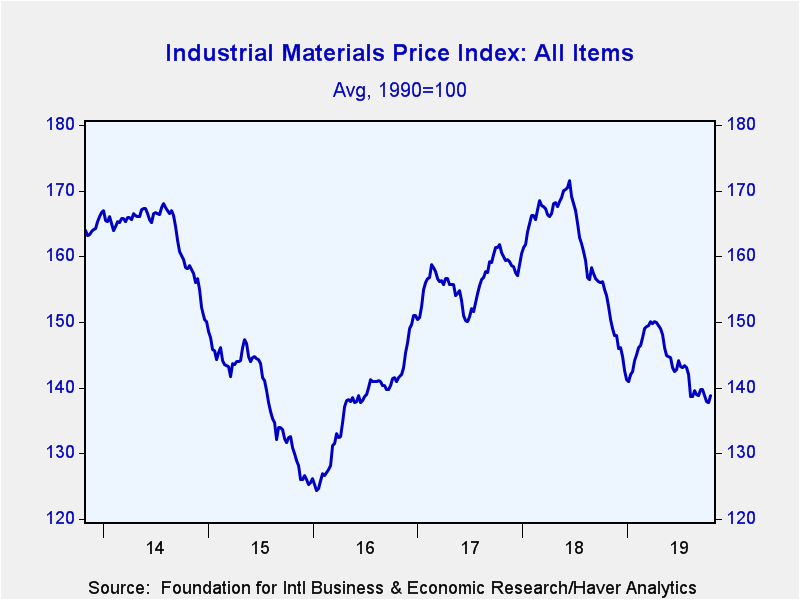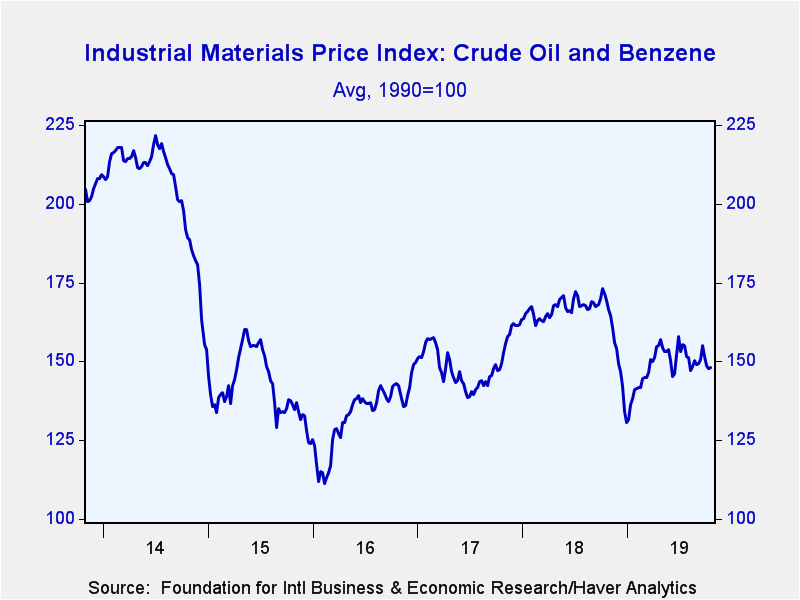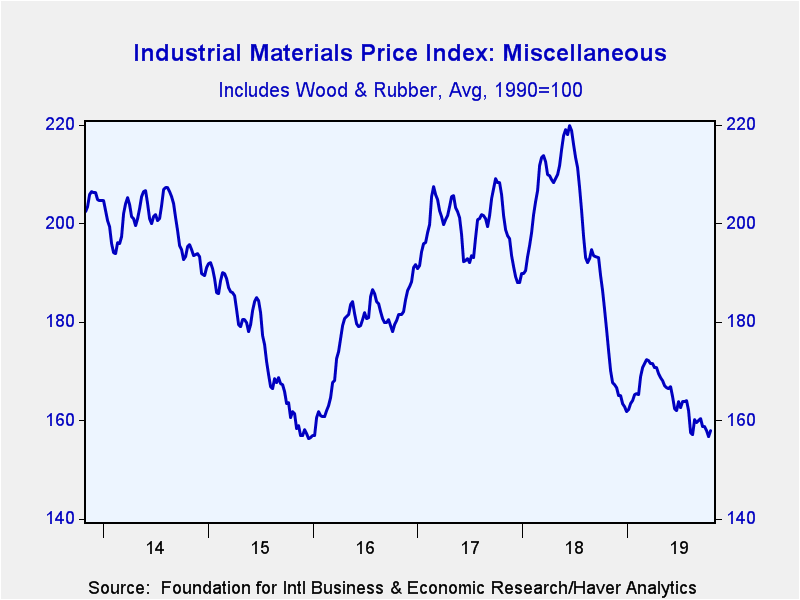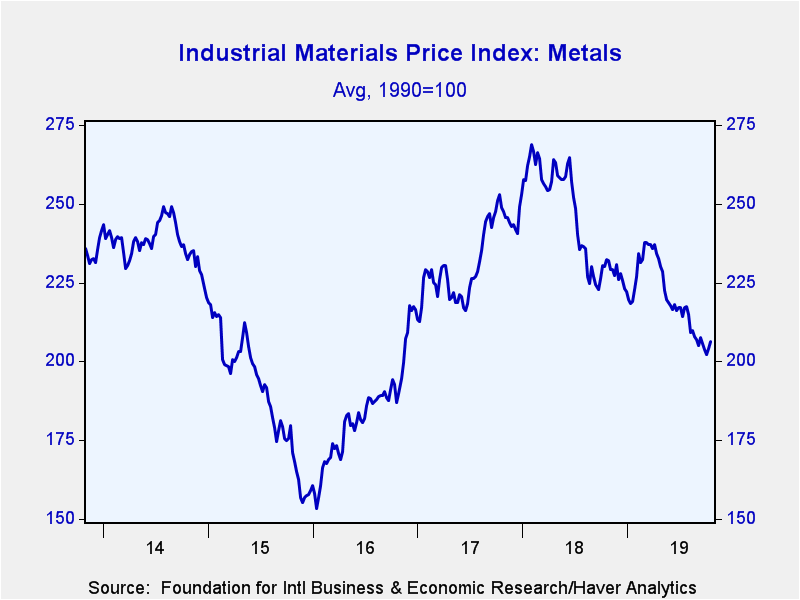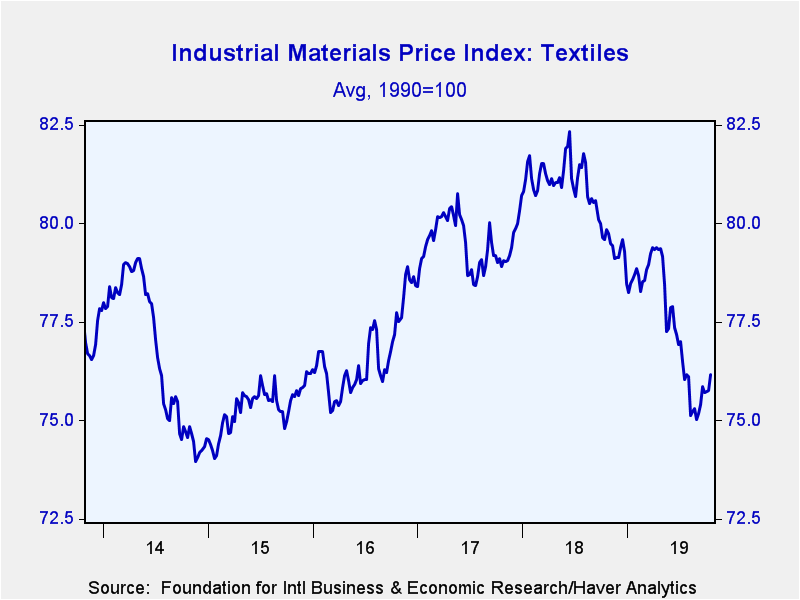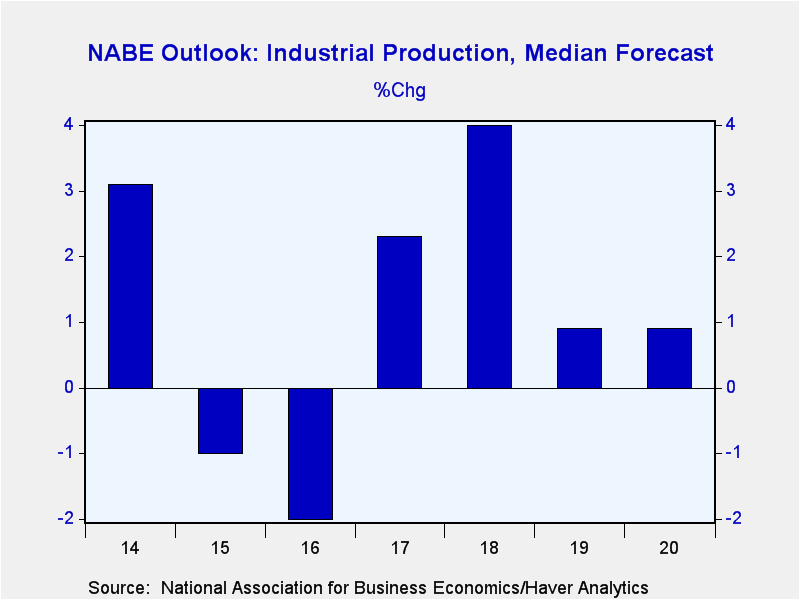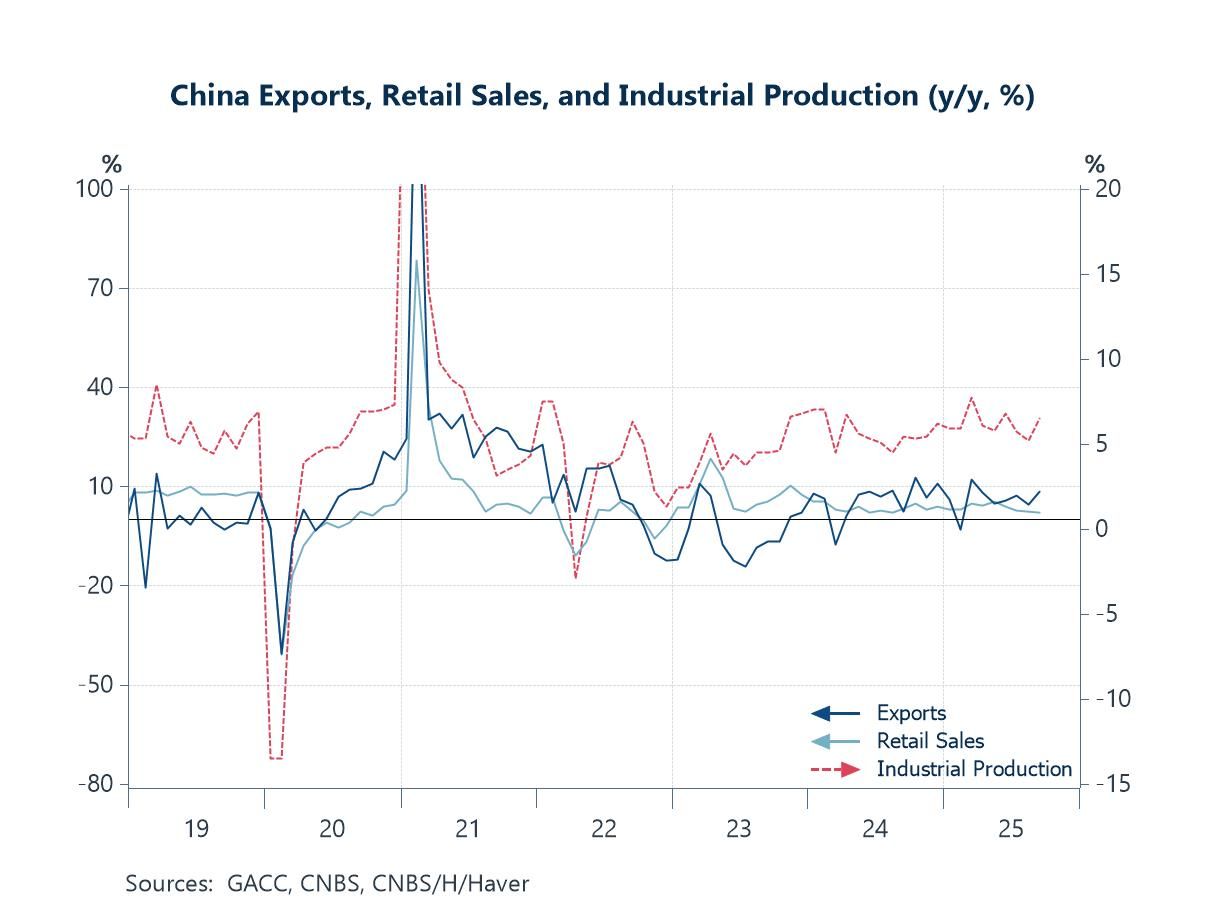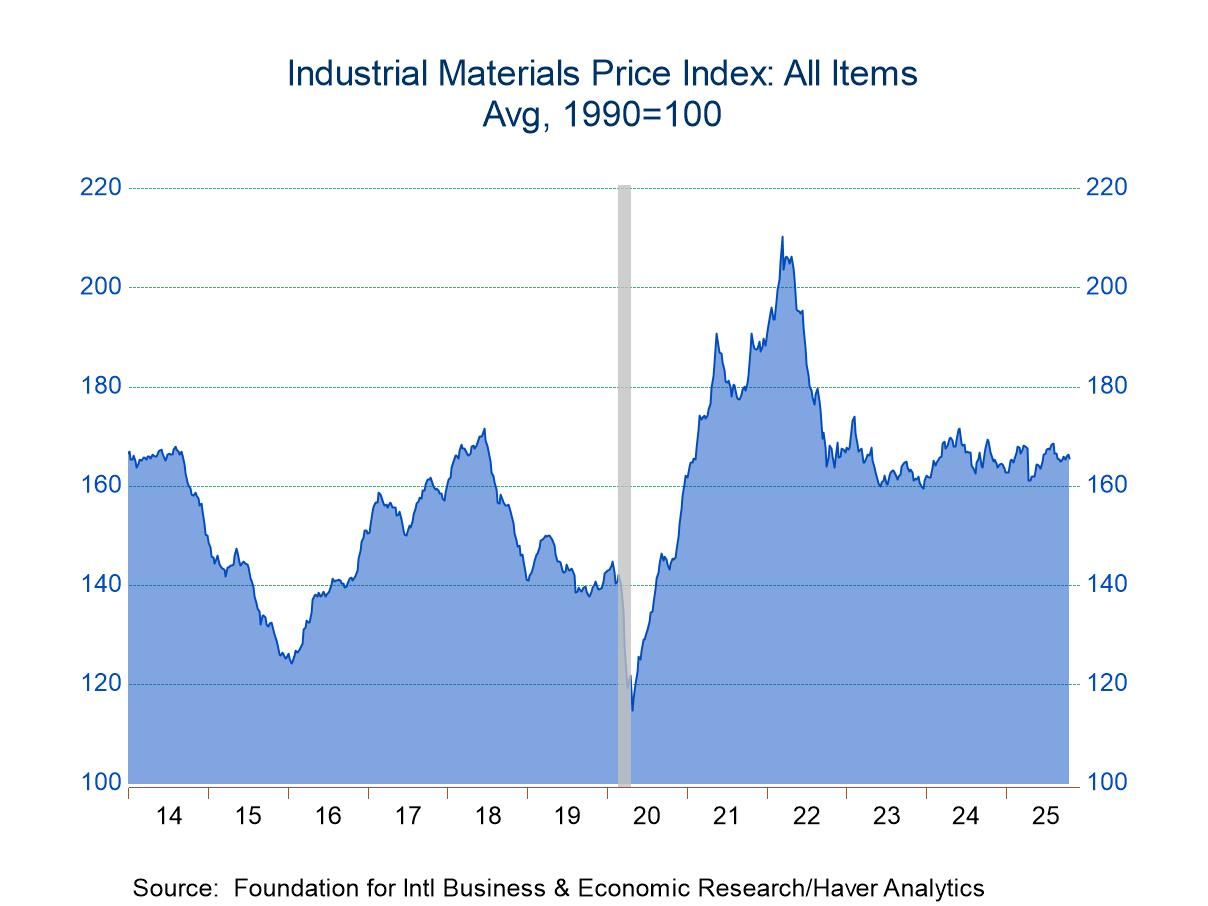 Global| Oct 21 2019
Global| Oct 21 2019FIBER: Industrial Commodity Prices Are Fairly Steady
by:Tom Moeller
|in:Economy in Brief
Summary
The Industrial Materials Price Index from the Foundation for International Business and Economic Research (FIBER) declined 0.7% during the last four weeks. An uptick last week was part of an irregular sideways path in place since [...]
The Industrial Materials Price Index from the Foundation for International Business and Economic Research (FIBER) declined 0.7% during the last four weeks. An uptick last week was part of an irregular sideways path in place since early August. Despite this stability, the price index was down 9.9% y/y and remained near the lowest level since spring 2016.
Weakness in the Crude Oil & Benzene category paced the price shortfall last month with a 4.5% decline. Crude oil prices fell 11.2% to $53.55, though benzene prices eased just 0.8% during the last four weeks (-14.2% y/y). The FIBER price index excluding crude oil was unchanged during the last four weeks (-9.0% y/y). Prices in the Miscellaneous grouping slipped 0.6% during the last month, led by a 5.5% drop in natural rubber prices. That was offset by a last month's 1.6% improvement in framing lumber prices and stability (-23.5% y/y) in the price of structural panels. Metals costs improved 0.3% during the last four weeks lead by zinc prices which rose 4.0% (-8.3% y/y) and lead prices which improved 4.1% (5.9% y/y). Prices for other metals weakened during the last four weeks as aluminum prices declined 2.8%. Copper scrap prices fell 1.3% and steel scrap prices were off 0.9%. To the upside, prices in the Textile group rose 0.4% as part of a recently strengthened trend. Cotton prices increased 5.5% last month, but burlap prices declined 4.1% m/m and 13.6% y/y.
Economic activity will do little to support commodity prices over the short term. Recessions outside of the U.S. are continuing and U.S. factory output growth is projected to slow. Industrial production grew 4.0% last year. The consensus forecast from the National Association for Business Economics (NABE) recently was lowered to a sluggish 0.9% rise in production both this year and next. During the last ten years, there has been a 71% correlation between the y/y change in industrial commodity prices and the y/y change in factory sector output.
Commodity price data can be found in Haver's DAILY, WEEKLY, USECON and CMDTY databases. The NABE forecast is in the SURVEYS database.
| FIBER Industrial Materials Price Index (%) | 1-Mth | 3-Mth | 6-Mth | 12-Mth | 2018 | 2017 | 2016 |
|---|---|---|---|---|---|---|---|
| All Items | -0.7 | -3.2 | -7.1 | -9.9 | -12.0 | 6.7 | 19.2 |
| Textiles | 0.4 | 0.2 | -4.0 | -4.6 | -2.8 | 3.0 | 2.8 |
| Cotton (cents per pound) | 5.5 | 8.8 | -15.6 | -17.9 | -9.2 | 9.8 | 10.2 |
| Metals | 0.3 | -5.0 | -11.4 | -11.3 | -12.2 | 18.6 | 32.9 |
| Aluminum ($ per metric ton) | -2.8 | -5.7 | -7.1 | -15.5 | -12.7 | 26.0 | 13.0 |
| Copper Scrap (cents per pound) | -1.3 | -3.8 | -11.5 | -8.3 | -16.1 | 29.3 | 17.3 |
| Steel Scrap ($ per ton) | -0.9 | -19.6 | -23.6 | -26.9 | 2.3 | 16.8 | 74.5 |
| Crude Oil & Benzene | -4.5 | -4.5 | -4.5 | -12.5 | -20.0 | 8.1 | 20.4 |
| Crude Oil (WTI, $ per Barrel) | -11.2 | -7.3 | -16.2 | -24.3 | -24.4 | 10.9 | 44.3 |
| Miscellaneous | -0.6 | -3.7 | -6.8 | -11.5 | -14.8 | -0.5 | 21.7 |
| Framing Lumber ($ per 1000 board ft.) | 1.6 | 3.3 | 5.7 | 0.0 | -23.1 | 20.0 | 12.9 |
| Natural Rubber (cents per pound) | -5.5 | -15.3 | -15.3 | -5.0 | -4.1 | -29.6 | 89.4 |
Tom Moeller
AuthorMore in Author Profile »Prior to joining Haver Analytics in 2000, Mr. Moeller worked as the Economist at Chancellor Capital Management from 1985 to 1999. There, he developed comprehensive economic forecasts and interpreted economic data for equity and fixed income portfolio managers. Also at Chancellor, Mr. Moeller worked as an equity analyst and was responsible for researching and rating companies in the economically sensitive automobile and housing industries for investment in Chancellor’s equity portfolio. Prior to joining Chancellor, Mr. Moeller was an Economist at Citibank from 1979 to 1984. He also analyzed pricing behavior in the metals industry for the Council on Wage and Price Stability in Washington, D.C. In 1999, Mr. Moeller received the award for most accurate forecast from the Forecasters' Club of New York. From 1990 to 1992 he was President of the New York Association for Business Economists. Mr. Moeller earned an M.B.A. in Finance from Fordham University, where he graduated in 1987. He holds a Bachelor of Arts in Economics from George Washington University.


